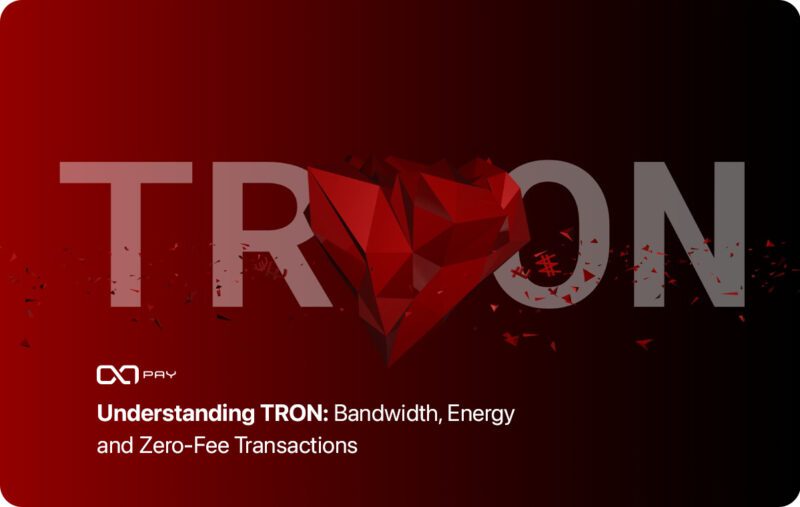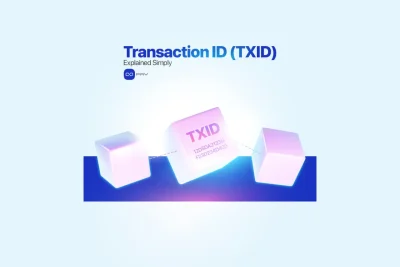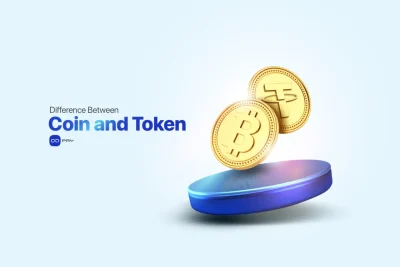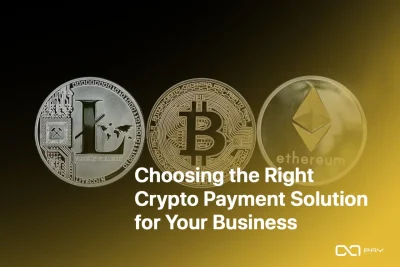TRON, founded by Justin Sun in 2017, is a decentralized blockchain platform renowned for its exceptional throughput, scalability, and smart contract capabilities. The platform envisions creating a robust ecosystem for decentralized applications (dApps) and facilitating seamless peer-to-peer transactions. Central to achieving this vision, TRON employs a unique system of bandwidth, energy, and zero-fee transactions. In this comprehensive article, we will delve into the intricacies of bandwidth, energy, and zero-fee transactions on the TRON network, exploring the underlying technology and their implications for users and developers.
The TRON Blockchain Architecture
The TRON blockchain architecture is the underlying framework that powers the TRON network. It shares similarities with other smart contract platforms like Ethereum but sets itself apart with its delegated proof-of-stake (DPoS) consensus mechanism, which enhances scalability and transaction speed.
Key components of the TRON blockchain architecture include:
- Delegated Proof-of-Stake (DPoS) Consensus
- Smart Contracts
- Bandwidth and Energy
- TRON Virtual Machine (TVM)
- Token Standards
- Decentralized Applications (dApps)
Delegated Proof-of-Stake (DPoS) Consensus
Delegated Proof-of-Stake (DPoS) is a consensus mechanism used in some blockchains like TRON. Through DPoS, token holders vote for super representatives to validate transactions and create new blocks, effectively improving scalability and transaction speed.
In DPoS, the steps for block production are:
- Selection of Super Representatives: Token holders vote to elect super representatives.
- Block Production: Elected super representatives take turns producing blocks based on a schedule.
- Block Verification: Other super representatives verify new blocks for security.
- Block Finalization: Approved blocks are added to the blockchain, making transactions immutable.
Advantages of DPoS Consensus:
- Scalability: DPoS achieves higher transaction throughput than PoW, handling more transactions per second.
- Energy Efficiency: DPoS is more energy-efficient than PoW, reducing resource-intensive mining activities.
- Decentralization: While involving fewer super representatives, DPoS still allows token holders to participate in network governance through voting.
- Fast Block Confirmation: DPoS provides faster block production and transaction confirmation, improving user experience.
However, DPoS has potential drawbacks like power concentration among super representatives and centralization risks. Its effectiveness relies on network governance and token holder participation.
Smart Contracts
On the TRON blockchain, smart contracts play a pivotal role in enabling the execution of decentralized applications (dApps) and facilitating various blockchain-based functionalities. Notably, TRON’s smart contract platform is compatible with the Solidity programming language, which is the same language used in Ethereum smart contracts.
Key aspects of smart contracts on the TRON blockchain include:
- Solidity Support: TRON’s smart contract platform is compatible with Solidity, making it easy for developers familiar with Ethereum to build dApps on TRON.
- TRON Virtual Machine (TVM): The TRON Virtual Machine executes smart contracts efficiently and securely.
- Decentralized Applications (dApps): Smart contracts power various dApps on TRON, including gaming, DeFi, and content distribution.
- Energy and Bandwidth Usage: Smart contracts on TRON consume energy and bandwidth, requiring users to have enough for dApp interactions.
- Token Standards: TRON supports token standards like TRC-10 and TRC-20 for creating and managing custom tokens.
- Transaction Costs: TRON users must pay TRX-based transaction fees for executing smart contracts.
Use cases of smart contracts on the TRON blockchain:
- Decentralized Exchanges (DEX): Smart contracts power decentralized exchanges on TRON, enabling trustless and automated token swaps between users.
- Staking and Yield Farming: Smart contracts are used to implement staking mechanisms and yield farming protocols in TRON’s DeFi ecosystem, allowing users to earn rewards for providing liquidity or staking their tokens.
- Gaming: TRON’s smart contracts enable the creation of blockchain-based games where in-game assets and ownership are managed transparently on the blockchain.
- Content Sharing: Smart contracts facilitate direct interactions between content creators and consumers, allowing for transparent royalty payments and copyright protection.
Overall, smart contracts on the TRON blockchain provide a versatile and powerful toolset for developers to create innovative decentralized applications and contribute to the growth of the TRON ecosystem.
Bandwidth on TRON
Bandwidth and energy are essential resources on the TRON blockchain, serving different purposes to facilitate the smooth operation of the network and the execution of smart contracts. With bandwidth being a crucial aspect of the TRON network, it refers to the capacity or resources required to process transactions and execute smart contracts. Each account on the TRON blockchain is allocated a specific amount of bandwidth, which determines its transactional capabilities. This allocation of bandwidth ensures fair usage of network resources and helps prevent potential abuse.
Acquiring Bandwidth
Users can acquire bandwidth on the TRON network through a process called “staking” or “freezing.” By staking TRX, the native cryptocurrency of TRON, users lock up their tokens for a specific period, earning bandwidth points in return. The more TRX staked and the longer the staking period, the more bandwidth points the user accumulates.
Utilizing Bandwidth
When a user initiates a transaction or executes a smart contract, the network deducts bandwidth points from their account. The amount of bandwidth required is contingent on the complexity of the transaction. Once the transaction is complete, the utilized bandwidth points are released back to the user, becoming available for future transactions.
Bandwidth Limitations
While bandwidth is crucial for network usage, it is not unlimited. If a user exhausts their allocated bandwidth, they must wait until the network replenishes their bandwidth points or stake additional TRX to increase their bandwidth capacity.
Energy on TRON
Energy on the TRON network is primarily used for executing smart contracts. Unlike bandwidth, which is acquired through staking TRX, energy is accumulated passively over time by every account on the TRON blockchain, regardless of whether the account holds TRX or not. The rate at which energy accumulates is directly related to the amount of TRX held by the account.
Smart Contract Execution
When a user initiates the execution of a smart contract, the network consumes energy based on the complexity of the contract. Simple smart contracts require minimal energy, while more complex ones consume a larger portion of the accumulated energy.
Energy Limitations
Similar to bandwidth, energy also has its limitations. If an account exhausts its available energy, it must wait for it to regenerate over time before executing more smart contracts.
In summary, bandwidth and energy are critical resources on the TRON blockchain, with bandwidth being essential for general network transactions, and energy being specifically used for smart contract execution. Proper management of these resources ensures the efficient functioning of the TRON network and enables users to interact with dApps and execute smart contracts seamlessly.
TRON Virtual Machine (TVM)
The TRON Virtual Machine (TVM) is a crucial component for executing smart contracts on the TRON blockchain. It interprets and processes smart contract bytecode written in Solidity. TVM is efficient, secure, and ensures deterministic execution. It uses a gas model, similar to Ethereum, to manage contract execution costs. TVM also allows for upgradable contracts, enabling developers to improve contract functionality without disrupting existing interactions. Overall, TVM empowers developers to build dApps and contributes to the growth of the TRON ecosystem.
Token Standards
Token standards on the TRON blockchain, notably TRC-20, play a crucial role in defining rules for token creation, management, and transfer. Similarly, like ERC-20 on Ethereum, TRC-20 tokens are fully compatible with TRON applications, ensuring seamless integration. Moreover, these tokens are fungible, representing interchangeable assets such as utility tokens and gaming assets. Additionally, TRC-20 tokens promote interoperability, facilitating smooth interactions between diverse applications and wallets. With a strong emphasis on security and consistency, TRC-20 significantly contributes to the growth and adoption of blockchain technology within the TRON ecosystem.
Decentralized Applications (dApps)
Decentralized Applications (dApps) are integral to the TRON blockchain ecosystem, providing innovative and decentralized services. TRON’s dApp infrastructure empowers developers to create applications without central control, ensuring transparency and user autonomy. Moreover, key features of TRON dApps include smart contract foundations, scalability, high throughput, TRC-20 token support, user empowerment, DeFi services, gaming, entertainment, and content sharing platforms. These dApps embody decentralization and user empowerment, catering to diverse industries and preferences. Additionally, as TRON grows, its dApp ecosystem will play a pivotal role in shaping decentralized technologies’ future.
Zero-Fee Transactions on TRON
Zero-fee transactions on TRON refer to the ability of users to conduct transactions on the TRON blockchain without incurring any transaction fees. Unlike many other blockchain networks that require users to pay fees for processing their transactions, TRON offers a unique feature where certain transactions can be executed without any cost to the user.
This feature is made possible through the concept of bandwidth and energy on the TRON network. Every account on TRON is allocated a specific amount of bandwidth and energy, which are essential resources for processing transactions and executing smart contracts. Users can acquire bandwidth by staking TRX, the native cryptocurrency of TRON, and energy is accumulated passively over time based on the amount of TRX held in the account.
For simple transactions that consume minimal resources, users may have enough allocated bandwidth and energy to execute them without needing to pay any fees. These are known as zero-fee transactions. However, if a transaction is more complex and requires additional resources beyond the user’s allocated bandwidth and energy, they may need to stake more TRX or wait for their resources to regenerate before proceeding with the transaction.
Advantages of Zero-Fee Transactions
Zero-fee transactions on the TRON blockchain offer several advantages for users and developers, contributing to a more user-friendly and efficient ecosystem. Some key advantages include:
- Cost Savings: Eliminate transaction fees for users.
- User-Friendly Experience: Simplified process for users.
- Increased Adoption: Encourages broader dApp usage.
- Enables Microtransactions: Facilitates small-value transactions.
- Seamless Interactions: Promotes smooth dApp engagement.
- Attractive to Developers: Streamlines development process.
- Scalability: Supports efficient and robust network.
- Enhanced User Retention: Improves user loyalty.
- Easier Onboarding: Welcomes new users to blockchain.
- DeFi Incentives: Attracts participation in DeFi applications.

OxaPay – Simplifying TRON Payments
OxaPay, a leading crypto payment gateway, offers an intuitive solution for merchants seeking to integrate TRON payments into their websites or applications. By leveraging TRON’s capabilities, OxaPay ensures rapid and secure transactions, enhancing the payment experience for both merchants and customers.
User-Friendly Interface
OxaPay caters to businesses of all technical backgrounds, offering flexible integration methods. The platform also provides competitive transaction fees, maximizing profitability while minimizing payment processing costs for businesses of all sizes.
24/7 Support
OxaPay offers 24/7 support to ensure merchants receive timely assistance. Additionally, a dedicated account manager ensures a seamless experience and swift issue resolution. Furthermore, OxaPay streamlines the onboarding process by eliminating the need for Know Your Customer (KYC) documentation, reducing administrative burdens and simplifying compliance requirements.
FAQ
How do I acquire bandwidth on TRON?
To acquire bandwidth on TRON, users can participate in a process known as "staking" or "freezing." By staking TRX, which is TRON's native cryptocurrency, users lock up their tokens for a specific period, earning bandwidth points in return. The amount of bandwidth points accumulated is influenced by the quantity of TRX staked and the duration of the staking period.
What is energy on TRON?
Energy on TRON represents another essential resource, primarily utilized for executing smart contracts. Unlike bandwidth, energy is not obtained through freezing TRX. Instead, it is passively accumulated over time by every account on the TRON network, irrespective of whether the account holds TRX or not. The rate at which energy is accumulated is directly related to the amount of TRX held by the account.
How do I use energy on TRON?
Users can use energy on TRON to execute smart contracts. When a user initiates the execution of a smart contract, the network consumes energy based on the complexity of the contract. Simple smart contracts require minimal energy, while more intricate ones consume a larger portion of the accumulated energy.
What are zero-fee transactions on TRON?
Zero-fee transactions on TRON are a unique feature of the network. Unlike many other blockchain platforms that require users to pay transaction fees, TRON allows certain types of transactions to be performed without any fees. TRON classifies transactions into two types: "Bandwidth Triggered" and "Energy Triggered." Transactions that involve only bandwidth and do not require smart contract execution fall under the "Bandwidth Triggered" category and are eligible for zero fees. On the other hand, transactions that involve smart contract execution consume energy and are categorized as "Energy Triggered." Zero-fee transactions encourage more frequent and efficient use of the network, particularly for simple value transfers and token transactions, without burdening users with transaction costs.
Conclusion
In conclusion, TRON stands out as an innovative decentralized blockchain platform with its unique system of bandwidth, energy, and zero-fee transactions, making it a leading choice for developers and users alike. Its DPoS consensus, smart contracts, token standards, and dApps create a versatile and empowering environment for building and interacting with decentralized applications.
As businesses seek to leverage the benefits of the Tron blockchain, accepting TRON payments becomes a strategic advantage. By embracing TRON’s exceptional throughput, scalability, and zero-fee transactions, businesses can enjoy cost savings, a user-friendly experience, and increased adoption. Integrating TRON payments through Oxapay, a trusted crypto payment gateway, ensures seamless and secure transactions for both merchants and customers. Simplify your payment processes, attract new customers, and stay ahead in the evolving digital landscape by proudly declaring “Accepting TRON Payments” as your preferred payment solution.






